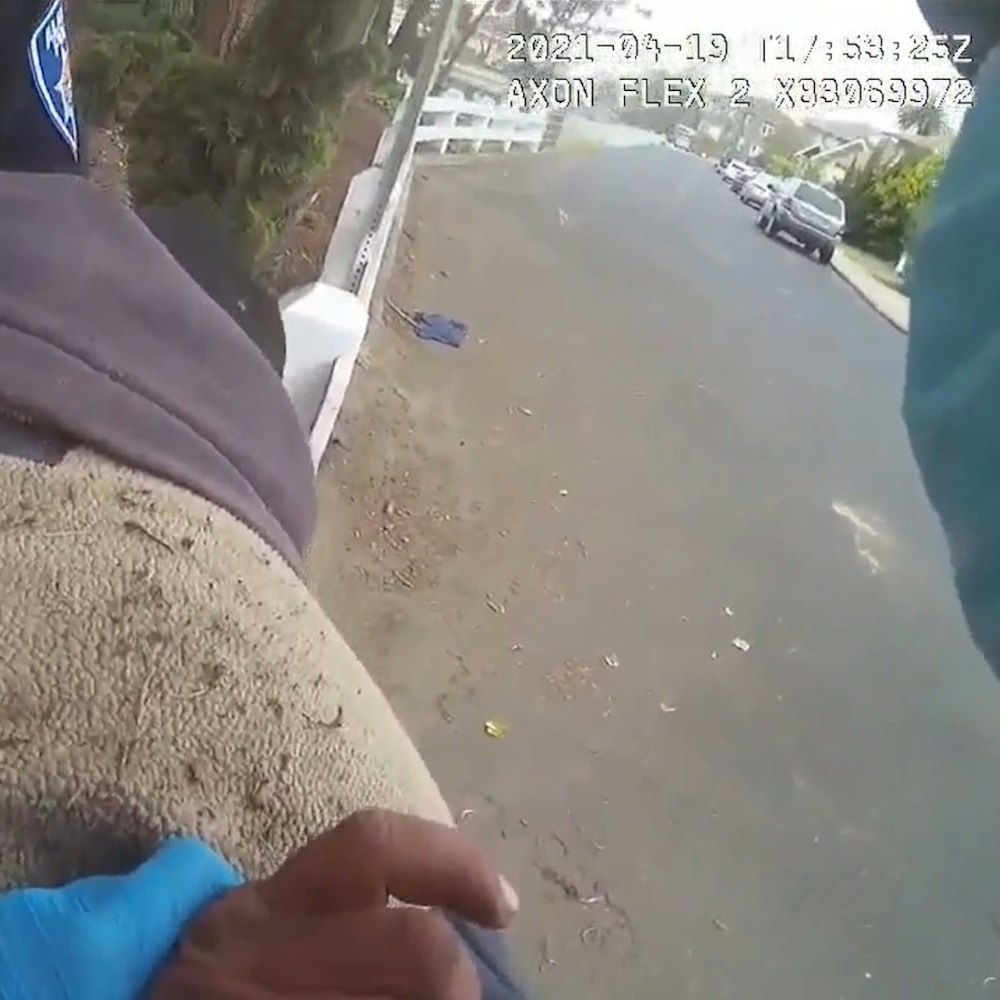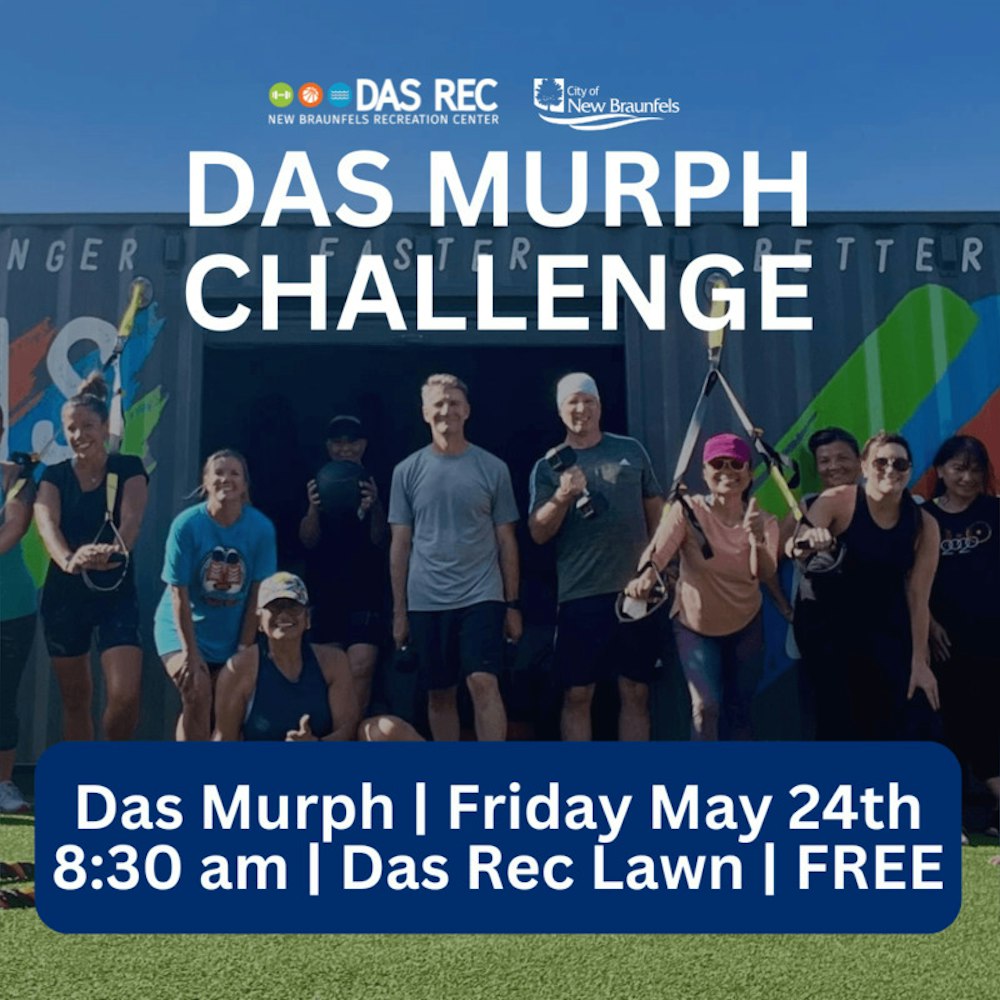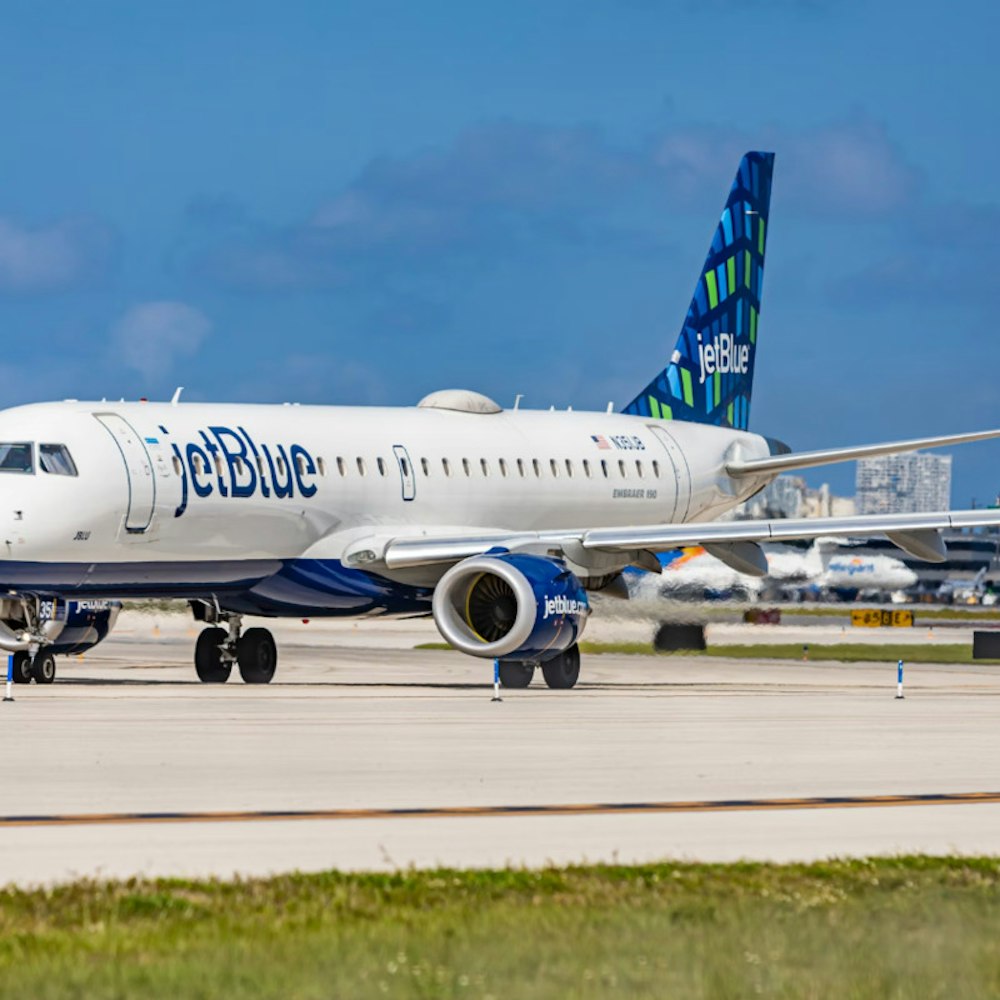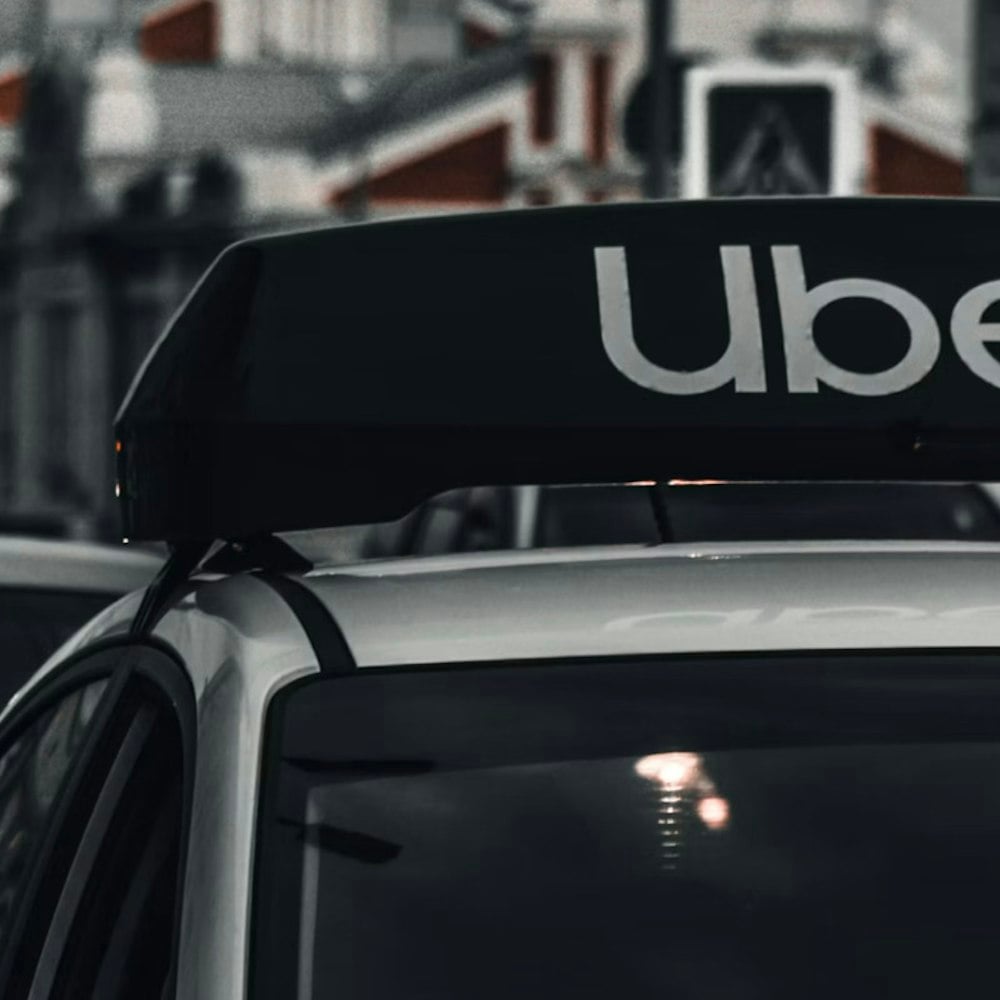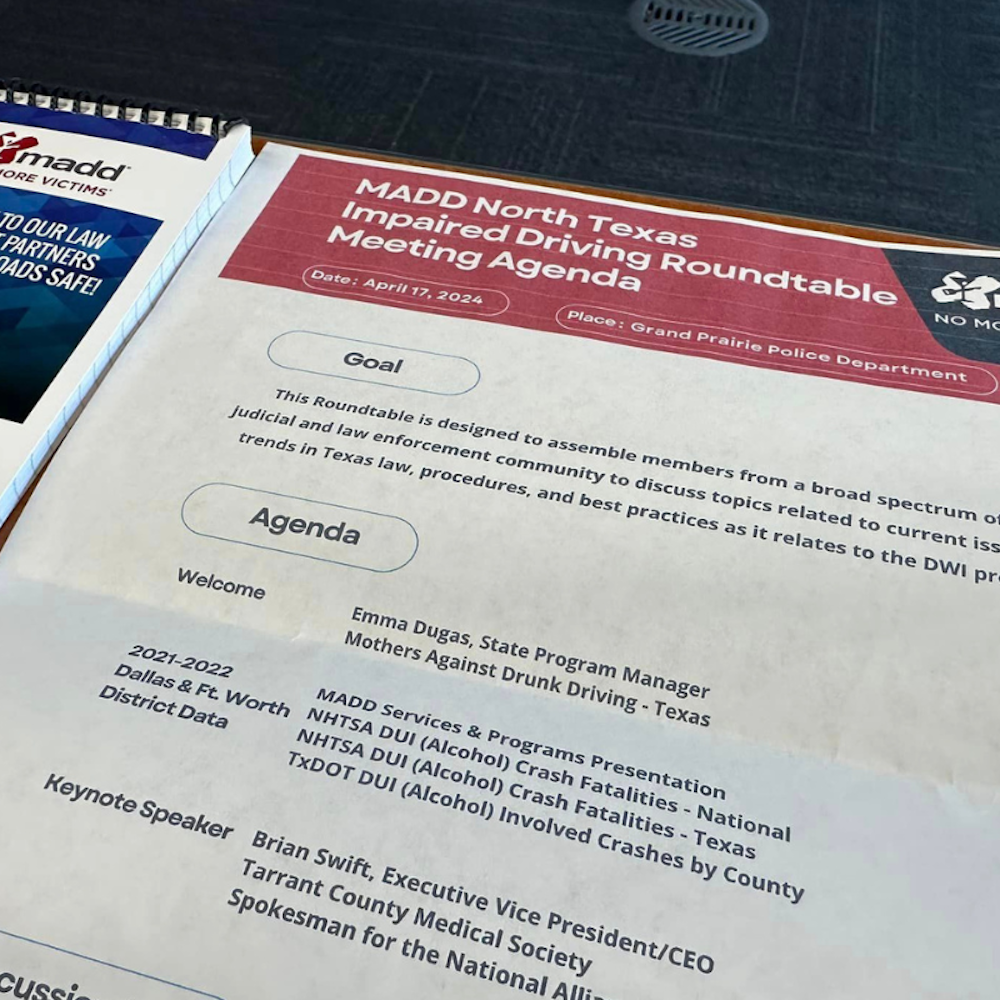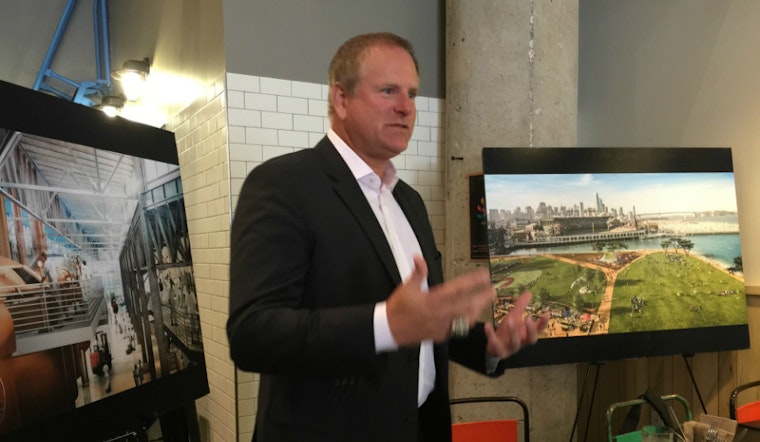
At a meeting held earlier this week, the South Beach Mission Bay Business Association (SBMBBA) decided to endorse a "yes" vote on Proposition D. The Prop D ballot question, which will go up for a vote this fall, asks voters to give the green light to the San Francisco Giants' plan to build a mixed-use development called Mission Rock on a parking lot and Pier 48. In order for the project to go through, voters will need to approve relaxing height limits from 40 feet up to 240 feet on 10 of the project's 28 acres. The project will also establish eight acres of park and open space and provide 1,500 units of housing.
Patrick Valentino, president of the SBMBBA, said the board vote was unanimously in favor of a "yes" endorsement on Prop D, with one abstention. At the meeting, held Tuesday morning, the group was addressed by Jack Bair, the San Francisco Giants' senior vice president and general counsel. Bair talked about the history of the project, gave reasons for supporting it, and handed out a fact sheet that outlined much of the same information as the project's website. If the voters pass Prop D on Nov. 3rd, he said, the first phase should be open by 2019. It should include a mix of housing, retail and offices.
The SBMBBA also voted to endorse Propositions J and K. Davi Lang, legislative aide to District 6 Supervisor Jane Kim, gave a brief presentation on both ballot measures. Proposition J would establish a "legacy business" historic preservation fund, and Proposition K would allow the city to build affordable housing on surplus public land.
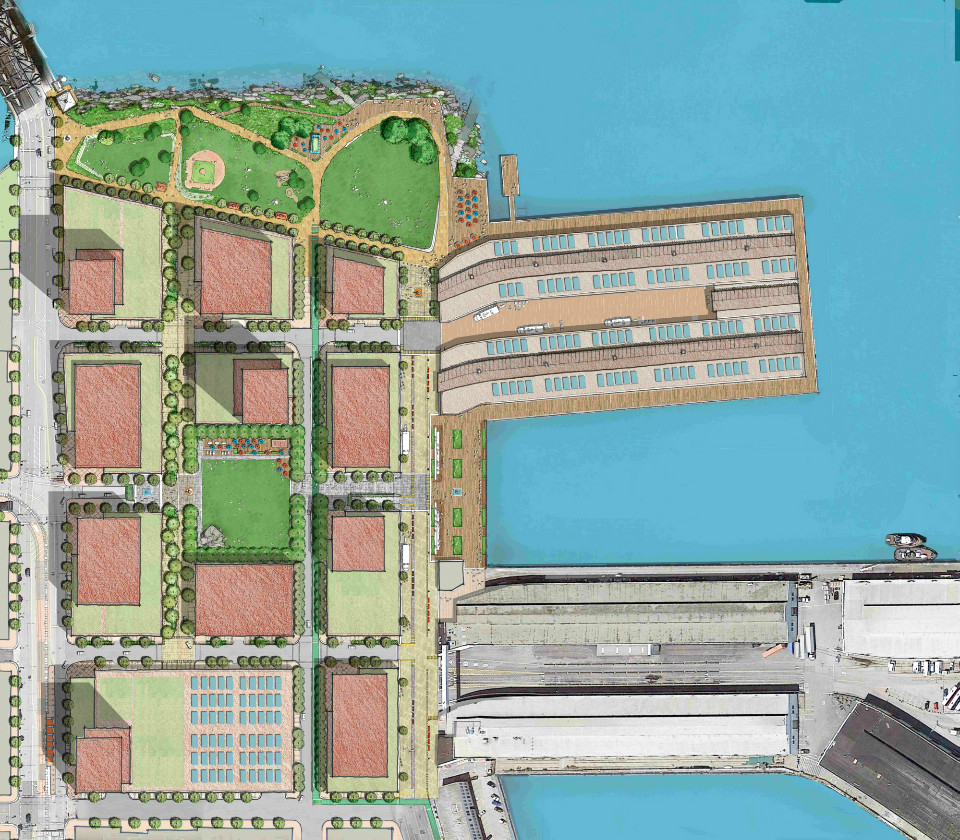
The Mission Rock site plan. (Rendering: SF Giants)
The Mission Rock project came about because "neighbors were interested in creating a communal feel in Mission Bay," Bair told the SBMBBA. He emphasized a green "town square" commercial district that will feature community-serving businesses like small retailers and cafes, offering places to hang out and have dinner, meet neighbors or pick up groceries.
"The idea is to take this surface parking lot and this pier that is used inside, but red-tagged outside, and to revitalize this space," he said.
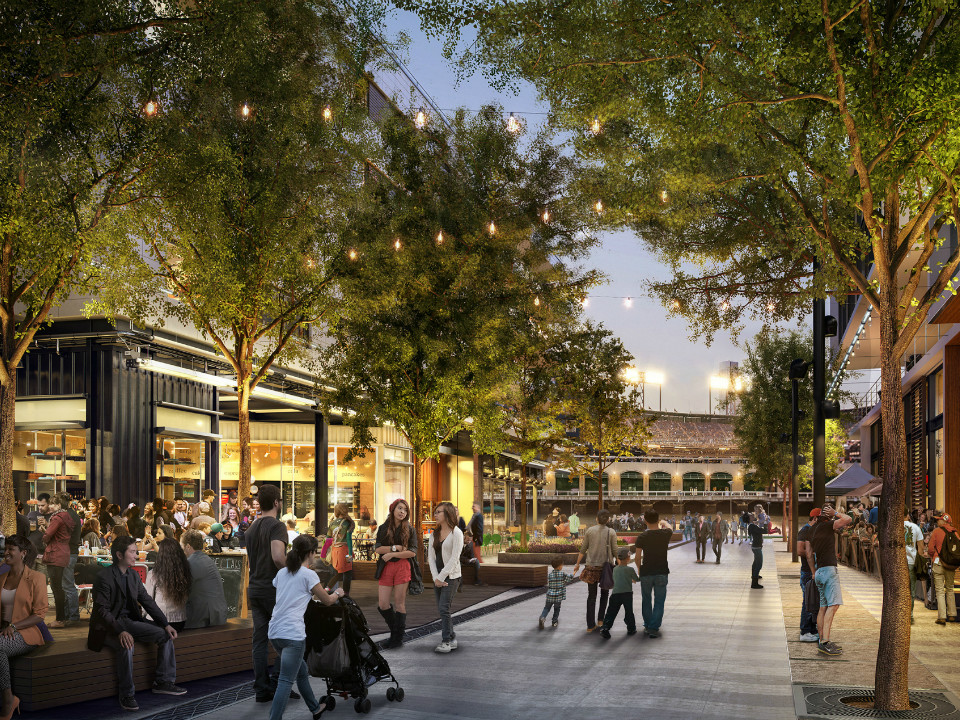
Neighborhood retail. (Rendering: SF Giants)
"We will curate the entire retail environment over the whole development," Bair said, to create a mix of active, lively ground-floor space. Plans will include a "maker's row" and offers of below-market rents to nonprofit and arts organizations.
The project also aims to include space on the pier for Anchor Brewing to expand their production. "The Giants are the largest consumer of Anchor Steam products in the world," Bair said, to laughter. "[With the new facility], they can quintuple their production."
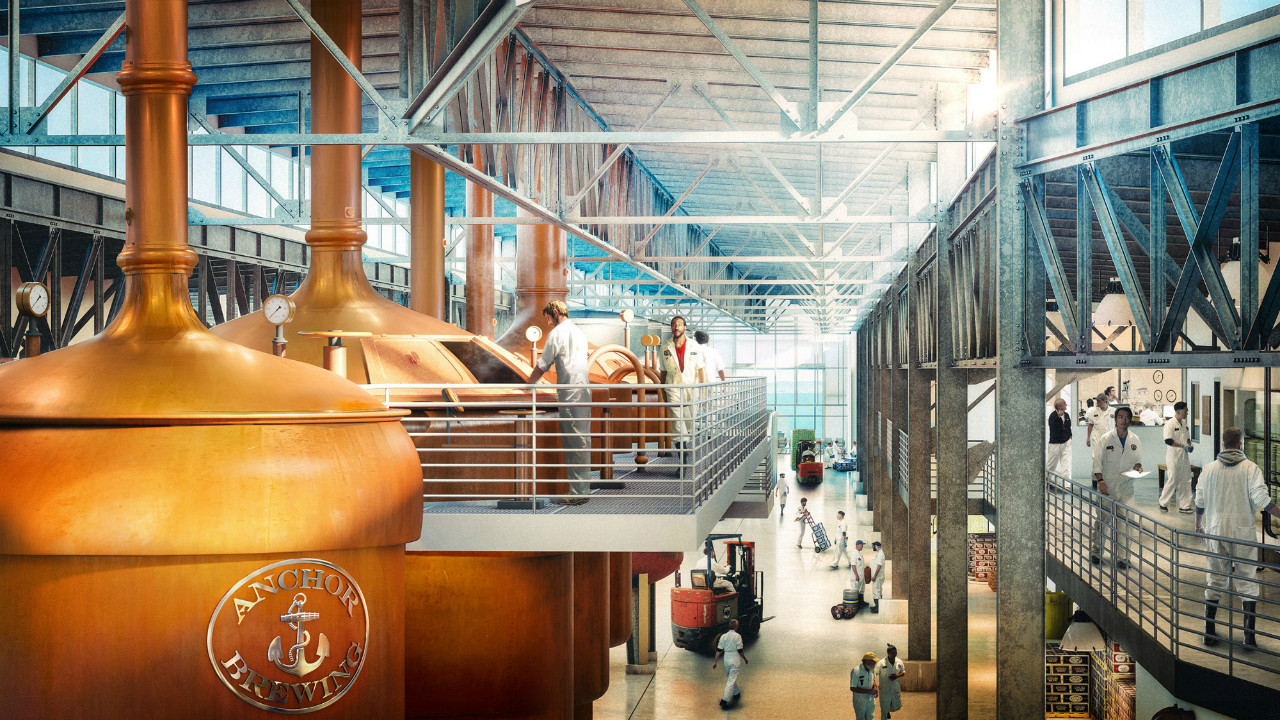
The proposed Anchor Brewing space. (Rendering: SF Giants)
Bair also discussed the 1,500 rental housing units in the development, which will include 40 percent—not 33 percent, as the ballot language states—affordable units, an unprecedented number that was bumped up after pressure from Supervisor Kim. Seven percent of the total units will be open to those earning up to 150 percent of the area's median income, such as teachers, nurses and firefighters.
The affordable units will be mixed throughout the development, which will include everything from studios to three-bedroom rentals. "We wanted to create a community that felt more authentic and egalitarian," Bair said. "We fought to do it in the more integrated way that we’re doing it, which is more complicated, but better."
The project will also include a five-acre waterfront park, which is designed to host events like small community festivals or movie nights. “One of the things that happens with a lot of open space in the city is it’s not actively managed,” Bair said. "It doesn’t always get used, and doesn’t always feel safe." The park will have programming and provide waterfront access.
Thanks to a parking garage, the development will retain all the parking needed for AT&T Park and add spaces for residents, office workers and retailers. Currently, the site fits about 2,500 parked cars, and the Mission Rock development will have room for 3,100, of which 2,000 will be available on event days. It's also well-served by transit.
Though no one spoke or voted against the Mission Rock project at the SBMBBA board meeting, the Giants already have made some alterations to the project's height, based on feedback. The tallest buildings were pared back from from 380 feet to 240 feet; building heights will range from 90 to 190 feet for office buildings and 120 to 240 feet for housing, and no new buildings will go up within 100 feet of the waterfront. The project has opponents, including the Sierra Club, but also has a broad base of support, particularly among those who live in the area.
If voters approve the project, the Giants will hold a 75-year lease for the property from the Port of San Francisco, which will receive the lease revenue. The Giants will pay $100 million in upfront development fees and $25 million a year in taxes, and expect to create 11,000 permanent jobs.

